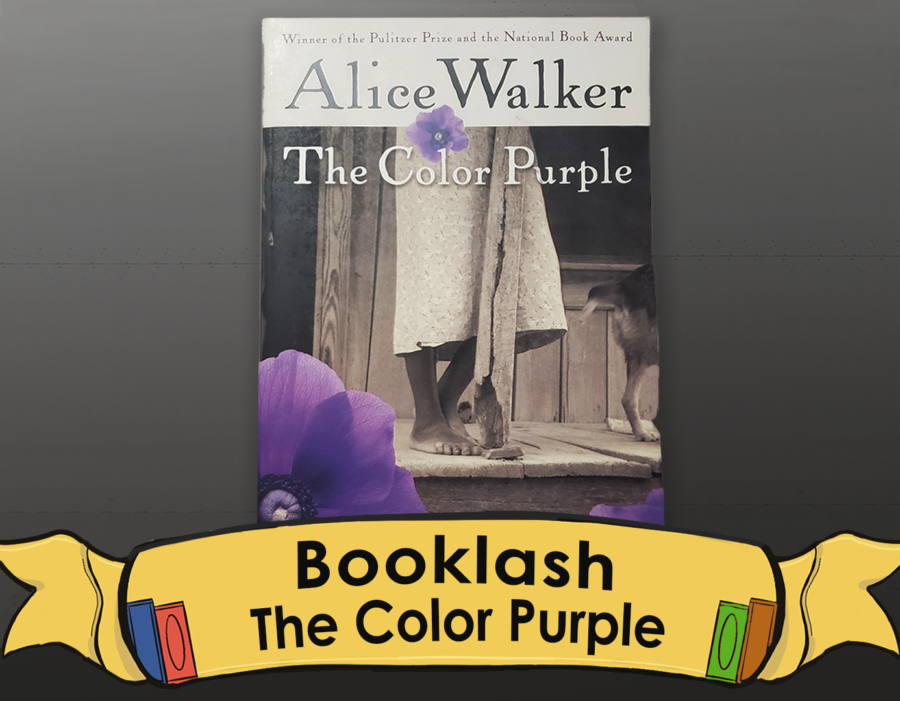BookLash: “The Color Purple”
Photo credit/ Jen Flynn
Alice Walker’s controversial novel was first published in 1982.
Alice Walker is a renowned author who has written numerous novels and short stories that mostly focus on the struggles of women of color in American society. Walker grew up in the South during the time of segregation which encouraged her to become a political and social activist who specializes in black literature.
Walker draws on her experiences to incorporate real struggles and lessons into her writing, earning the Pulitzer Prize for Fiction for her novel “The Color Purple”, which delved into the hardships faced by black women trying to make it in America after the abolishment of slavery.
Many can argue that “The Color Purple” is a feminist piece of literature. The novel showcases the ideas of domestic and sexual abuse in a real-world way. There is no sugar-coating the suffering, harm and trauma that these abuses create for women. For the reader, the novel opens up the pain that these women go through.
The reader is carried along the ride of struggle, bravery, and bittersweet satisfaction. The black women in this novel suffer numerous abuses from the men in their lives, as well as from white people. Despite their hardships, the women find ways to hold on; carrying themselves through life, hoping for a time where women are respected and saved from a life of rape and abuse.
“The Color Purple” explores the problems of abuse in America after the era of slavery ended. Unfortunately for black women, there was often no one they could turn to in order to get out of abusive situations. Even the police practiced willful ignorance when it came to the injustices befallen to the black community.
The novel continues through the lives of numerous characters, showing how the characters developed over time. The Black women in the novel arguably showed the most development, going from meager objects (as seen from the men’s perspective) to independent fiery women. Though these are fictional characters, they show how black Americans struggled to overcome their oppression and distinguish themselves from the notion of slavery, fighting for their rights as fellow Americans.
Although this novel is purely fiction and not based on a true story, “The Color Purple” is an accurate depiction of black life after slavery ended in the South. The accuracy of this novel is hard for some people to bear. Rather than acknowledge the wrongs white supremacy has done in the past and the indirect outcomes that resulted from our wrongs, people have turned to banning this novel from the young minds of society. In 1963, parents in Ohio fought to ban this novel for reasons of being anti-white and obscene.
Due to the racism, inappropriate language, violence, sexuality, and physical abuse, it was common for many people to attempt to ban this novel from high school reading lists and libraries. Though parents have the right to protest books that they believe harmful to children, they are also censoring the children from history and valuable lessons. Children are the next generation, generations we hope overcome obstacles such as racism and abuse. However, how can we expect children to overcome these obstacles by being censored from America’s history?
We live and we learn. While we are no longer living in the era of slavery, we learn from the history, outcomes, and trauma that this time period has created, as well as how it effects society in the present. Books such as “The Color Purple” are resources to show society the hardships faced in the past and how they are still relevant today. Though “The Color Purple ” is arguably a harder read, the novel can prove to be a valuable resource to the minds of a still racist society.
Contact the writer:
[email protected]

Amanda Morgan is a senior here at Marywood full of aspirations, double majoring in English Writing and English Literature, as well as pursuing her master's...









